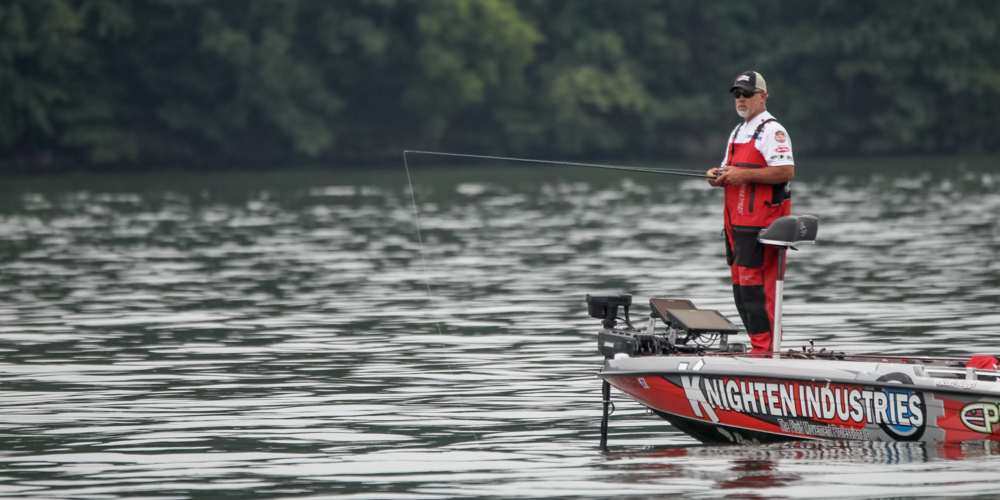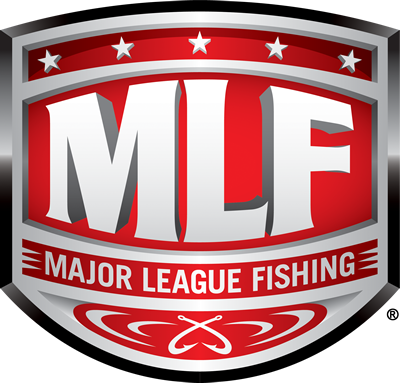
ALEXANDRIA, Minn. – The trio of teams fishing Match 2 of the Lucas Oil Qualifier Presented by B&W Trailer Hitches of the inaugural General Tire Team Series in central Minnesota took to Lake Ida vying for a win and a chance to advance to the $300,000 Team Series Championship.
After one day of fishing, Team Knighten Industries captain Wesley Strader, Mike McClelland, and Scott Suggs were able to place 105 bass and 222 pounds, 15 ounces on SCORETRACKER®. Their banner day equated to a 73-1 surplus over Team Builders FirstSource, consisting of Stephen Browning, Jeff Kriet, and Timmy Horton.
Knighten had a balanced effort, with all three members posting impressive daily totals. In fact, they were the three best anglers on the day, led by Suggs and his 37 bass for 78-9.
Team effort pays dividends for Knighten
As the Knighten team arrived at Lake Ida, they planned to work together immediately to formulate a plan for the lake. According to Suggs, the team knew that each of the three had unique skills and decided to play into that.
“Our game plan was to each start on our strengths,” Suggs said. “During the ride-around, we all looked for something that fit what we wanted to do. It worked out and we were able to catch them in different ways.”
For Suggs, that was targeting deeper grass with a Strike King Thunder Cricket vibrating jig paired with a Strike King Midsize Rage Bug, both in green pumpkin.
“We were behind near the end of the first period but started to figure it out around then,” he said. “I found a big high spot with good, tall grass around it. I was targeting 8 to 11 feet of water, concentrating on the deeper grass around it with the Thunder Cricket and most of the bites came on any place where the grass formed a point.”
As a testament to their diversity, each team member stuck with their strengths for most of the day without needing to share water.
“(McClelland) got on a good smallmouth bite on shallow docks – he’s an excellent dock fisherman, so he stayed with that plan,” Suggs said. “Wesley discovered a good spinnerbait bite during the morning. Late in the day, I told him the kind of area I was fishing and he found a similar area. He had a great afternoon, fishing deep grass with a vibrating jig. It was a team effort and we all did what we wanted to do.”
McClelland had the second-best daily total with 35 fish for 75-15 and Strader was able to add 33 for 68-7, third-best on the day.
At the end of the first day of competition, Builders FirstSource (Stephen Browning, Jeff Kriet, and Timmy Horton) had 149-14 and Smokey Mountain Herbal Snuff & Pouches (Josh Bertrand, Andy Morgan, and Brandon Coulter) had 118-11.
Day 2 of the battle between Knighten, Builders FirstSource and Smokey Mountain Herbal Snuff & Pouches can be seen on Saturday, Jan. 21 from 2-4 p.m. ET on Outdoor Channel.

Photo by Josh Gassmann - The last two events of our Bass Pro Tour season take us up north, which makes me pretty excited. The fish should be biting and the weather will be nice and comfortable and not sweltering like it is back home in Arkansas. Another thing I’m looking forward to is the chance to fish heavy grass in deep water.
This is one of my favorite things to do during the fall around the house – punching a jig or Texas rig through grass canopies is such a fun bite, and I think it’ll be a big player when we head to Cayuga Lake next week.
Pinpointing the Best Grass
The grass can grow pretty thick in the warmer months, and it can be hard to pinpoint where to start in a vast field of it. I’ll always start by looking for isolated clumps and points in the grass. Bass just gravitate to pieces of cover that are different then everything else around. Once I figure out what fish are relating to, I can run that and cover more water much quicker.
I like to have around 20 feet of water below the canopy. When you find this, there will often be clumps of grass underneath and you can find those little sweet spots holding fish.
I’ll start fishing the grass edges, but sometimes you have to pitch a full boat length into the mat to get bites. It has a lot to do with pressure. Back home, when the bite gets going in the fall, you just need to get it near the edge of the grass; as more people start pitching the grass, you have to pitch further and further in to catch anything.
Picking the Right Bait
My favorite bait in deep grass is a heavy jig, but there are also plenty of times where a soft plastic on a punch rig is the way to go. If it’s milfoil, the punch weight is usually better, but if it’s clean grass and you can get a jig through it, I’ll use a jig every chance I can.
My favorite jig is a 1- or 1 ¼-ounce Strike King Hack Attack Jig. If I’m using soft plastics, I choose a ¾ to 1-ounce weight with a Strike King Rage Bug. You want that heavy weight to get through the grass canopy, and the faster it falls, the quicker the fish have to decide what to do with it. It’s all about the reaction bite when fishing like this.
I like green pumpkin colors to try to imitate bluegill and will use jigs with a flash of orange or rootbeer colors to mimic what bass are eating.
For both the jig and punch rig, I like the Team Lew’s Greg Hackney Pitching Rod – it’s a 7-6 heavy, and I pair it with a 7.5:1 Team Lew’s HyperMag reel. Those bigger handles on the reel are great for getting ahold of the reel and making a fast hook set. I’ll spool the reel with 50-pound Strike King Tour Grade Braided Line.
Counting Down is Key
If you get 30 bites in a day fishing deep grass this way, 20 of them will come on the initial fall as the bait breaks through the canopy and heads to the bottom. I always flip on a slack line and as soon as I make a pitch, I put my reel on free spool and make a big loop around my head with my rod to have more slack because I want the bait to fall as fast as possible. Then, the second I engage my reel, I’m in a position to set the hook quickly.
Many people want to work the bait as soon as it falls, but I hold my rod steady and pay attention. If it feels heavy, or I see any movement of my braid, I know I better be setting the hook because a fish had it.
Once the bait hits bottom, I’ll pause, work it a few times, then bring it in to make another flip. To be efficient fishing this way, you must pay attention to where your bites are coming. Sometimes your bites will only be a few feet below the canopy because the fish are suspended up high in the water; other times, they’ll be right on the bottom.
To get dialed into where the bites are coming, I count in my head with each pitch. I get in such a zone with my count that someone could be in my boat and talking, and I don’t even hear what they’re saying – the countdown is that important for me. Some days, it’s a six count and others, it may be more or less, but paying attention to the count is how I can be the most productive and not waste time.


















